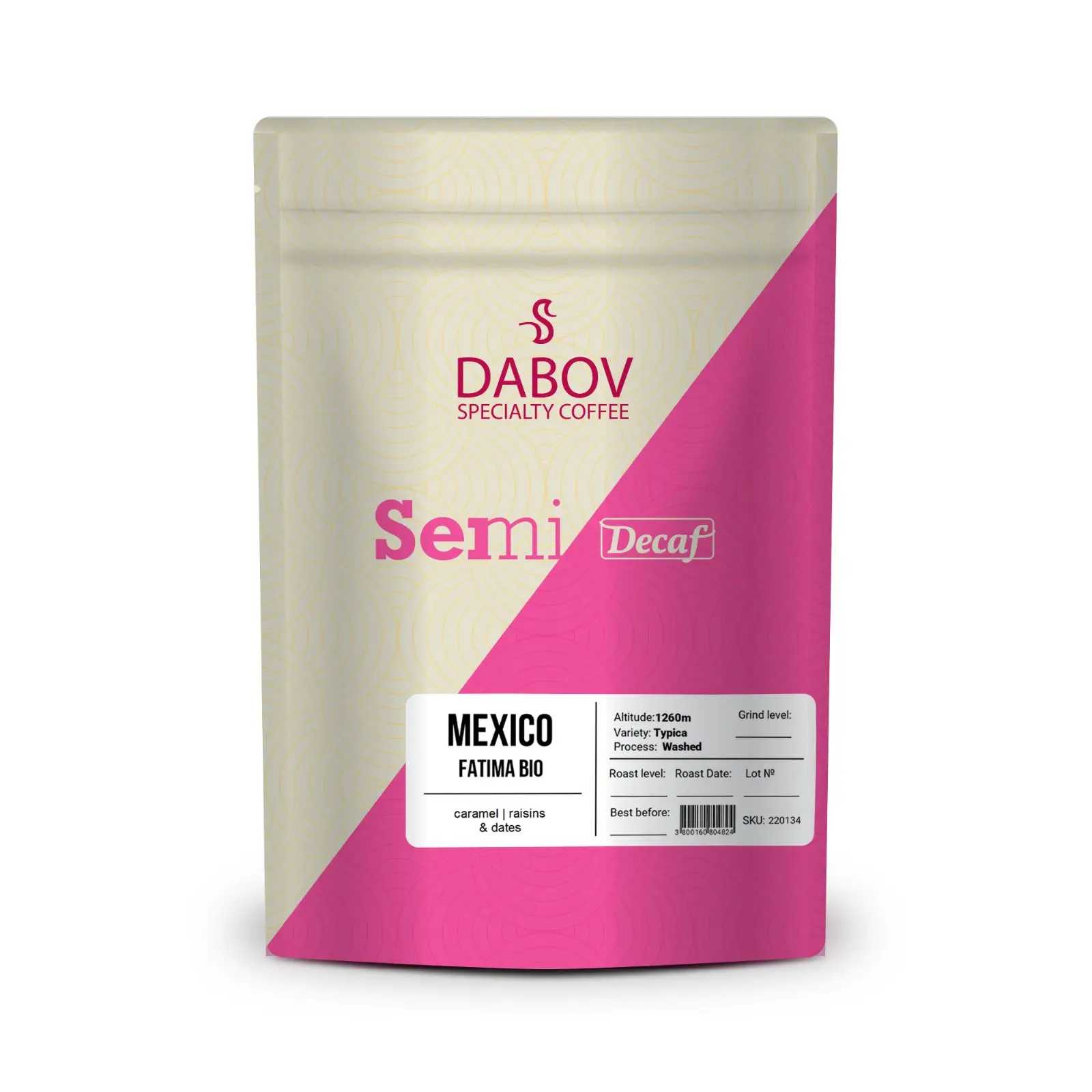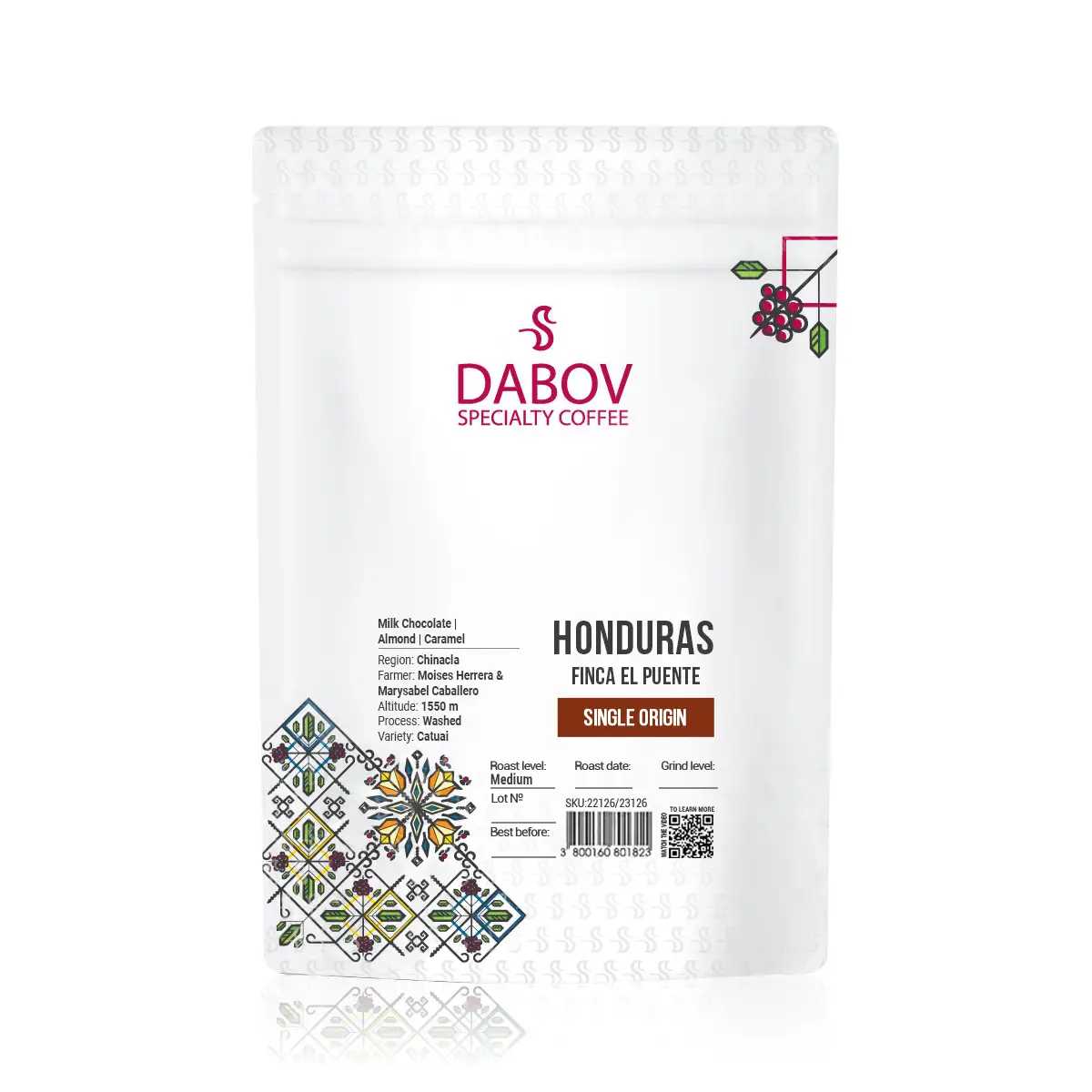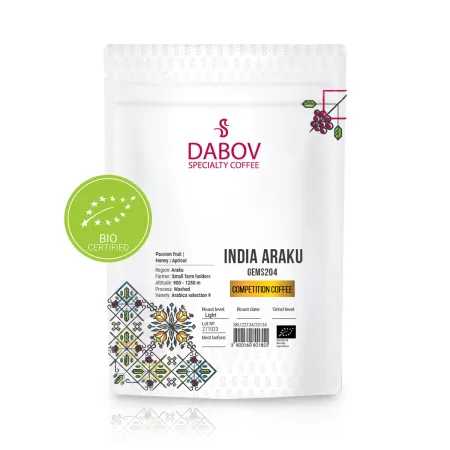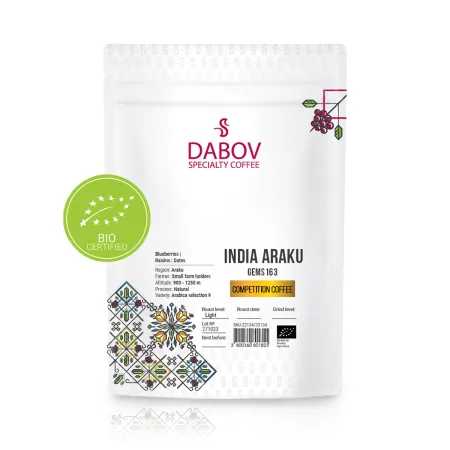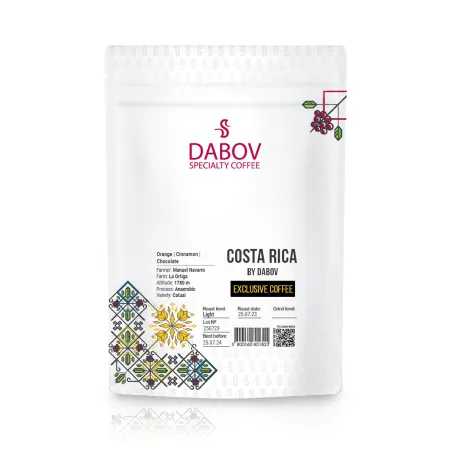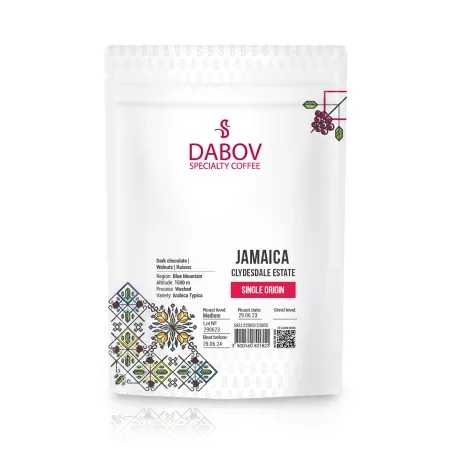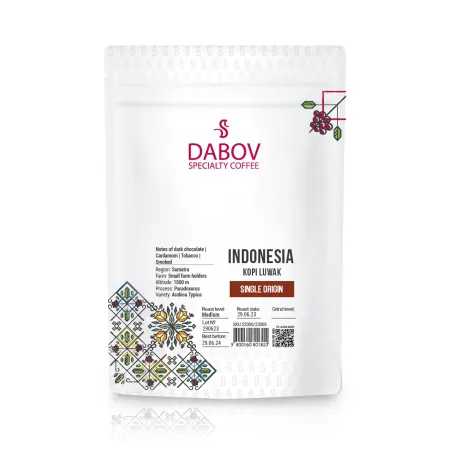A Journey Through African Coffee Regions Taste and Tradition
Embark on a flavorful journey through Africa's rich coffee regions, where taste and tradition intertwine. From the highlands of Ethiopia to Kenya's slopes, each cup tells a story and showcases unique aromas and flavors. Discover the cultural significance behind the brewing rituals and how local communities shape the coffee experience. With a history steeped in tradition, African coffee offers a feast for the senses and a deeper understanding of its global importance. Join us as we explore the diverse landscapes and distinctive profiles of African coffee, and learn how to appreciate this vibrant beverage that binds communities together.
In the vast tapestry of global coffee culture, African coffee regions stand out as vibrant threads, weaving together a rich narrative of flavor, tradition, and cultural significance. From the misty highlands of Ethiopia to the sun-drenched plains of Kenya, the diverse landscapes of Africa have given birth to some of the world's most celebrated coffee varieties. This journey through the continent's coffee-producing regions is not merely a exploration of taste, but a deep dive into the very soul of African coffee culture, where every sip tells a story of heritage, community, and artisanal craftsmanship.
As we embark on this aromatic adventure, we'll uncover the unique flavors that define African coffee, explore the time-honored traditions that surround its cultivation and consumption, and examine the profound impact these practices have on local communities and the global coffee market. From the intricate coffee ceremonies of Ethiopia to the innovative processing methods of Rwanda, we'll discover how African coffee is not just a beverage, but a cultural cornerstone that has shaped societies for centuries.
I. Overview of African Coffee Regions
A. Geographical Diversity
The African continent boasts an incredibly diverse range of coffee-growing regions, each imparting its unique character to the beans cultivated within its borders. East Africa, often considered the cradle of coffee, is home to some of the most renowned coffee-producing countries in the world. The region's varied topography, from the highlands of Ethiopia to the volcanic soils of Kenya, creates microclimates that are ideal for coffee cultivation.
In Ethiopia, the birthplace of Coffea arabica, coffee grows wild in the lush forests of the southwestern highlands. The country's diverse landscape, ranging from 1,500 to 2,200 meters above sea level, provides a perfect environment for producing coffees with complex flavor profiles. Moving south, the Great Rift Valley cuts through Kenya, creating high plateaus and mountain ranges where some of the world's most prized coffees are grown. The rich, red volcanic soils and consistent rainfall patterns contribute to the distinctive brightness and acidity that Kenyan coffees are famous for.
West Africa, while less prominent in the specialty coffee scene, has a long history of coffee production. Countries like Côte d'Ivoire and Guinea primarily cultivate Robusta varieties, which thrive in the lower altitudes and warmer climates of the region. The unique terroir of West Africa imparts a bold, earthy character to these coffees, making them popular choices for espresso blends and instant coffee production.
Central Africa, encompassing countries such as Rwanda, Burundi, and the Democratic Republic of Congo, offers yet another dimension to the African coffee landscape. The region's high-altitude lakes and volcanic mountains create ideal conditions for growing high-quality Arabica beans. In recent years, coffees from this region have gained recognition for their bright acidity, full body, and complex flavor notes ranging from citrus to dark chocolate.
B. Key African Coffee-Producing Countries
While numerous African nations contribute to the continent's coffee production, several countries stand out for their significant contributions to the global coffee market and their distinctive coffee profiles.
Ethiopia, the legendary birthplace of coffee, remains a powerhouse in the industry. Producing approximately 7.5 million bags annually, Ethiopia is Africa's top coffee exporter and the world's fifth-largest coffee producer. Ethiopian coffee is renowned for its incredible diversity, with thousands of undiscovered coffee varieties growing wild in the country's forests. The most famous Ethiopian coffees come from regions like Yirgacheffe, Sidamo, and Harrar, each offering a unique flavor profile ranging from bright and citrusy to wine-like and berry-forward.
Kenya has long been celebrated for producing some of the world's most sought-after coffees. Despite producing less volume than Ethiopia, Kenyan coffee commands premium prices due to its exceptional quality and distinctive flavor profile. The country's coffee auction system, coupled with meticulous grading standards, ensures that Kenyan coffee maintains its reputation for excellence. Kenyan coffees are known for their bright acidity, full body, and complex flavor notes that can include blackcurrant, citrus, and wine-like characteristics.
Uganda, often overshadowed by its East African neighbors, is actually Africa's second-largest coffee producer by volume. The country primarily produces Robusta coffee, accounting for about 80% of its output, but its Arabica production, particularly from the Mount Elgon region, is gaining recognition in the specialty coffee market. Ugandan coffees are noted for their sweet and balanced profiles, often with notes of chocolate and nuts.
Tanzania, with its famous peaberry coffees from the slopes of Mount Kilimanjaro and the southern highlands, rounds out the list of key players in East African coffee production. Tanzanian coffees are prized for their bright acidity, medium to full body, and flavors that can range from black tea-like delicacy to rich, wine-like complexity.
These countries, along with emerging producers like Rwanda and Burundi, form the backbone of Africa's coffee industry. Each brings its unique terroir, processing methods, and cultural practices to the cup, contributing to the rich tapestry of flavors and traditions that define African coffee.
II. The Essence of African Coffee Culture
A. Historical Context
The story of coffee in Africa is a tale as rich and complex as the beverage itself, deeply intertwined with the continent's history, mythology, and cultural evolution. While coffee is now cultivated across much of Africa, its origins can be traced back to the ancient coffee forests of Ethiopia's southwestern highlands.
Legend has it that coffee was discovered by a goat herder named Kaldi in the 9th century. Kaldi noticed his goats becoming unusually energetic after eating berries from a certain tree. Intrigued, he tried the berries himself and experienced a similar boost in energy. This discovery eventually led to the cultivation and spread of coffee throughout Ethiopia and beyond.
By the 15th century, coffee had made its way to Yemen, where it was cultivated in monasteries and began its journey as a global commodity. The Arabs initially maintained a monopoly on coffee production, but as demand grew, so did efforts to cultivate coffee in other regions. In the 17th and 18th centuries, European powers began establishing coffee plantations in their African colonies, particularly in regions with suitable climates and altitudes.
In East Africa, coffee cultivation spread from Ethiopia to neighboring countries like Kenya and Tanzania during the colonial era. The British introduced coffee to Kenya in 1893, and it quickly became a major cash crop. In West Africa, coffee production began in the late 19th century, with countries like Côte d'Ivoire becoming significant producers of Robusta coffee.
The 20th century saw significant changes in the African coffee industry. As countries gained independence, many nationalized their coffee sectors or implemented cooperative systems to support small-scale farmers. This period also saw the rise of coffee as a crucial export commodity for many African nations, playing a vital role in their economies.
B. Cultural Practices
At the heart of African coffee culture lies a deep-rooted tradition of communal coffee consumption, exemplified by the elaborate coffee ceremonies found in various regions. Perhaps the most famous of these is the Ethiopian coffee ceremony, a ritual that can last for hours and is considered an integral part of social and cultural life.
The Ethiopian coffee ceremony is a sensory experience that engages all five senses. It begins with the roasting of green coffee beans in a pan over hot coals, filling the air with the rich aroma of freshly roasted coffee. The roasted beans are then ground using a traditional mortar and pestle, and the ground coffee is brewed in a special clay pot called a jebena. The coffee is served in small cups called cini, often accompanied by snacks like popcorn or roasted barley.
What makes this ceremony truly special is its social aspect. It's a time for friends, family, and neighbors to come together, share news, and engage in conversation. The ceremony is typically performed three times a day, with each round of coffee given a special name: Abol (first), Tona (second), and Baraka (third), believed to transform the spirit.
In other parts of Africa, coffee consumption rituals may differ, but the emphasis on community and hospitality remains constant. In Sudan, for example, coffee is often spiced with ginger or cinnamon and served as part of a welcoming ritual for guests. In some West African countries, coffee is mixed with cocoa to create a unique beverage that bridges the region's two major cash crops.
C. Influence of Local Communities
The influence of local communities on African coffee culture cannot be overstated. From cultivation practices to consumption habits, coffee is deeply embedded in the social fabric of many African societies.
In many coffee-growing regions, small-scale farmers are the backbone of the industry. These farmers often use traditional, sustainable farming methods passed down through generations. For example, in Ethiopia's Harrar region, coffee is still largely produced using centuries-old dry processing methods, which contribute to the coffee's distinctive fruity and wine-like flavors.
Local communities have also played a crucial role in preserving coffee genetic diversity. In Ethiopia, where coffee grows wild in forest ecosystems, local communities have acted as custodians of these forests, protecting thousands of undiscovered coffee varieties. This genetic diversity is not only crucial for the future of coffee in the face of climate change but also contributes to the wide range of flavors found in Ethiopian coffees.
The way coffee is consumed and appreciated in different African cultures also reflects local traditions and values. In many communities, offering coffee to guests is a sign of respect and hospitality. The act of preparing and serving coffee is often imbued with social significance, with specific roles assigned based on age, gender, or social status.
Moreover, in recent years, there has been a growing movement among African coffee-producing communities to take greater control over their product and its narrative. This has led to the emergence of local coffee shops and roasteries in cities across Africa, where young entrepreneurs are redefining African coffee culture for a new generation, blending traditional practices with modern coffee trends.
III. A Taste of African Coffee
A. Flavor Profiles by Region
The diverse landscapes and climates of Africa's coffee-growing regions contribute to a wide array of flavor profiles, each as unique as the terroir from which it originates. Understanding these flavor profiles is key to appreciating the complexity and diversity of African coffees.
Ethiopian coffees are renowned for their incredible diversity of flavors, often described as bright, complex, and fruit-forward. Coffees from the Yirgacheffe region are celebrated for their floral and citrusy notes, often compared to jasmine or bergamot. These coffees typically have a light to medium body with high acidity, creating a clean and elegant cup. Sidamo coffees, on the other hand, often exhibit berry-like flavors, particularly blueberry, along with notes of dark chocolate and spice. Harrar coffees, dry-processed and full-bodied, are known for their wine-like acidity and complex fruit notes, sometimes described as having hints of blackberry or strawberry.
Kenyan coffees are famous for their bright acidity and full body. The flavor profile of a typical Kenyan coffee is often described as wine-like, with a juicy acidity reminiscent of blackcurrant or redcurrant. Many Kenyan coffees also exhibit citrus notes, particularly grapefruit, along with a sweet tomato-like savoriness. The complex interplay of these flavors results in a bold, vibrant cup that coffee connoisseurs often consider the epitome of East African coffee.
Tanzanian coffees, particularly those from the northern regions near Mount Kilimanjaro, are known for their bright acidity and medium body. These coffees often have a wine-like acidity similar to Kenyan coffees, but tend to be smoother and less intense. Flavor notes can include black tea, citrus, and sometimes tropical fruit. The famous Tanzania Peaberry, a specific type of coffee bean, is particularly prized for its bright, clean flavor profile.
Rwandan coffees have gained recognition in recent years for their well-balanced profiles. These coffees typically have a medium body with a buttery mouthfeel and moderate acidity. Flavor notes often include caramel, orange, and sometimes floral hints reminiscent of black tea. The best Rwandan coffees are noted for their clean, sweet finish.
Ugandan Arabica coffees, particularly those from the Mount Elgon region, offer a different flavor profile compared to their East African neighbors. These coffees tend to have a medium body with lower acidity. Flavor notes often include chocolate, nuts, and sometimes subtle fruit undertones. The overall profile is typically described as sweet and balanced.
West African coffees, predominantly Robusta varieties, present a stark contrast to the Arabica-dominated East African profiles. These coffees are known for their strong, full body and low acidity. Flavor notes often include earthy, woody, and sometimes rubber-like characteristics. While less complex than their Arabica counterparts, these coffees provide the strong, bitter backbone often sought after in espresso blends.
B. Processing Methods
The way coffee is processed after harvesting plays a crucial role in determining its final flavor profile. In Africa, two main processing methods are employed: washed (or wet) processing and natural (or dry) processing. Each method imparts distinct characteristics to the coffee and is often chosen based on local traditions, climate conditions, and desired flavor outcomes.
Washed processing, prevalent in countries like Kenya and Rwanda, involves removing the coffee cherry's outer skin and pulp before the beans are dried. This method begins with sorting and cleaning the freshly harvested cherries, which are then pulped to remove the outer skin. The beans, still covered in mucilage, are then fermented in water tanks for 12-72 hours. After fermentation, the beans are washed to remove any remaining mucilage and then dried, either in the sun or in mechanical dryers.
The washed process typically results in coffees with higher acidity, cleaner flavors, and a lighter body. It allows the intrinsic flavors of the coffee bean to shine through, which is why it's favored for high-quality Arabica coffees. Kenyan coffees, famous for their bright, wine-like acidity, are a prime example of the clarity of flavor that can be achieved through washed processing.
Natural processing, on the other hand, is the oldest method of processing coffee and is still widely used in Ethiopia, particularly in the Harrar region. In this method, the entire coffee cherry is dried with the bean inside. The cherries are spread out in thin layers on raised beds or patios and turned regularly to ensure even drying. Once the cherries have dried to the correct moisture content, the dried pulp is removed mechanically.
Naturally processed coffees tend to have a heavier body, lower acidity, and more complex, fruit-forward flavors. The extended contact between the bean and the cherry during drying allows for the absorption of sugars and fruit characteristics, resulting in coffees with distinctive berry or wine-like notes. Ethiopian Harrar coffees, known for their intense blueberry flavors, are a classic example of naturally processed coffee.
In recent years, some African producers have been experimenting with honey processing, a method that lies between washed and natural processing. In honey processing, the skin of the cherry is removed, but some or all of the mucilage is left on the bean during drying. This can result in coffees with some of the fruit notes of natural processing but with a cleaner cup similar to washed coffees.
The choice of processing method is not just a matter of flavor but also has cultural and practical implications. In Ethiopia, for example, the traditional natural processing method is deeply ingrained in the coffee culture of certain regions. In other areas, water scarcity may make washed processing less feasible. Understanding these processing methods provides insight into both the flavors in the cup and the broader context of coffee production in Africa.
C. Trends in African Coffee Consumption
While Africa has long been a major exporter of coffee, domestic consumption patterns on the continent have been evolving rapidly in recent years. This shift is driven by a combination of economic growth, urbanization, and a growing middle class with an increasing appreciation for quality coffee.
Traditionally, coffee consumption in many African countries was relatively low, with tea often being the preferred hot beverage. However, this is changing, particularly in urban areas. Cities across Africa are seeing a boom in local cafes and specialty coffee shops, catering to a growing demographic of young, urban professionals who are developing a taste for high-quality, locally sourced coffee.
In Ethiopia, where coffee consumption has always been high due to its deep cultural significance, there's a trend towards more modern coffee shops in urban areas. These establishments often blend traditional Ethiopian coffee ceremonies with contemporary cafe culture, offering both time-honored preparation methods and espresso-based drinks.
Kenya, despite being a major coffee producer, has historically had low domestic consumption. However, recent years have seen a significant uptick in local coffee drinking. Nairobi, in particular, has developed a vibrant cafe scene, with numerous specialty coffee shops opening across the city. These cafes often showcase locally sourced, single-origin Kenyan coffees, fostering a greater appreciation for the country's coffee among its own citizens.
In West Africa, countries like Côte d'Ivoire and Senegal are seeing a rise in coffee consumption, particularly in urban areas. This is partly driven by the return of young professionals who have studied or worked abroad and developed a taste for specialty coffee. In these countries, there's a growing trend of coffee shops that not only serve coffee but also act as social hubs and workspaces for young entrepreneurs.
Another significant trend is the increasing focus on value addition within African countries. Rather than exporting raw green coffee beans, more countries are investing in local roasting and packaging facilities. This allows them to capture more of the value chain and create products tailored to local tastes. In Rwanda, for example, the government has actively encouraged the development of a domestic coffee industry, leading to the emergence of local brands that are now competing with international coffee chains.
The rise of instant coffee is another notable trend, particularly in countries with less established coffee drinking traditions. Instant coffee provides an affordable and convenient entry point for new coffee drinkers, and several African countries are now producing their own instant coffee brands using locally grown beans.
Lastly, there's a growing awareness and pride in African coffee heritage among consumers on the continent. This is leading to increased demand for high-quality, locally produced coffees and a renewed interest in traditional preparation methods. Coffee festivals and barista championships are becoming more common in major African cities, further fueling interest in coffee culture.
These trends in African coffee consumption not only represent changing tastes and economic patterns but also offer new opportunities for African coffee producers. As domestic markets grow, they provide an additional revenue stream and the potential for greater stability in an industry often subject to the volatilities of the global market.
IV. The Traditions Surrounding Coffee
A. Coffee and Community
In many African cultures, coffee is far more than just a beverage – it's a social lubricant, a symbol of hospitality, and a centerpiece of community life. The rituals and traditions surrounding coffee consumption serve to strengthen social bonds, facilitate communication, and mark important occasions.
The Ethiopian coffee ceremony, mentioned earlier, is perhaps the most vivid example of how coffee fosters community. This ceremony, which can last for hours, is a time for friends, family, and neighbors to come together, share news, and engage in conversation. It's not uncommon for people to be invited to join a ceremony as they pass by, highlighting the inclusive nature of this tradition. The ceremony is typically performed three times a day, providing regular opportunities for social interaction and community building.
In Sudan and some other North African countries, coffee often plays a central role in conflict resolution. Traditional reconciliation ceremonies, known as "Judiya" in Sudan, often involve the sharing of coffee as a symbol of peace and goodwill. The act of preparing and sharing coffee in these contexts serves as a means of bringing conflicting parties together and facilitating dialogue.
In many coffee-growing communities across Africa, the harvest season is a time of increased social activity. Farmers often work together to harvest and process coffee, with the work interspersed with shared meals and coffee breaks. These communal work sessions, known as "harambee" in Kenya or "debo" in Ethiopia, strengthen community ties and ensure that even smaller farms can manage the labor-intensive harvest period.
Coffee also plays a significant role in life cycle events in many African cultures. In Ethiopia, it's common for coffee to be served at weddings, funerals, and other important gatherings. The act of serving coffee to guests is seen as a sign of respect and hospitality, and refusing coffee when it's offered can be considered impolite.
In urban settings, coffee shops are increasingly becoming important community spaces. They serve as meeting points for friends, venues for business meetings, and workspaces for students and young professionals. In cities like Nairobi, Addis Ababa, and Kigali, specialty coffee shops often host events such as book clubs, art exhibitions, and live music performances, further cementing their role as community hubs.
The communal aspect of coffee consumption in Africa extends beyond social interactions to economic cooperation as well. Many small-scale coffee farmers are members of cooperatives, which not only provide economic benefits but also serve as forums for knowledge sharing and community support. These cooperatives often become focal points of community life, organizing social events and sometimes providing services like education and healthcare.
B. Artistry in Coffee Preparation and Serving
The preparation and serving of coffee in many African cultures is elevated to an art form, with skilled practitioners honing their craft over years of practice. This artistry is evident not only in the meticulous care taken in preparing the coffee but also in the beautiful utensils and rituals associated with coffee service.
In Ethiopia, the coffee ceremony is a showcase of skill and grace. The woman performing the ceremony, usually the youngest in the household, dons traditional dress for the occasion. The ceremony begins with the spreading of fresh grass or flowers on the floor, symbolizing abundance. The green coffee beans are then roasted in a pan over hot coals, with the aromatic smoke wafting through the air, often enhanced with the burning of incense.
The roasted beans are then ground using a traditional mortar and pestle called a mukecha and zenezena. The ground coffee is then brewed in a special clay pot called a jebena, which has a spherical base, long neck, and pouring spout. The skill of the preparer is evident in how she pours the coffee – from a height of about a foot, in a thin stream, into small cups called cini without interruption or spilling.
In other parts of East Africa, such as Kenya and Tanzania, the preparation of "Kahawa Chungu" or bitter coffee showcases a different set of skills. This spiced coffee is traditionally prepared in brass kettles and served in small porcelain cups. The coffee is often flavored with spices like ginger, cinnamon, or cardamom, requiring a delicate balance to achieve the right flavor profile.
The artistry extends to the vessels used for serving coffee as well. In many parts of Africa, coffee is served in small cups without handles, often beautifully decorated. In Ethiopia, these cups, along with the jebena, are often made of clay and feature intricate designs. In North Africa, ornate metal coffee pots and small glass cups are common.
In recent years, as specialty coffee culture has taken root in African cities, a new form of coffee artistry has emerged – that of the skilled barista. In upscale cafes in Nairobi, Addis Ababa, or Kigali, you can find baristas crafting elaborate latte art or precisely measuring out pour-over coffees. These modern coffee artists often blend traditional African coffee preparation methods with contemporary techniques, creating a unique fusion of old and new.
The artistry of coffee preparation in Africa is not just about aesthetics or taste – it's a form of cultural expression and a way of honoring the rich heritage of coffee in these regions. Whether it's a traditional ceremony or a modern espresso preparation, the care and skill involved reflect the deep respect for coffee ingrained in many African cultures.
C. Challenges and Sustainability in Coffee Traditions
While coffee traditions in Africa are rich and deeply rooted, they face several challenges in the modern world. These challenges range from environmental concerns to economic pressures and changing social dynamics.
Climate change poses a significant threat to coffee production in Africa, potentially altering the landscapes that have given rise to these unique coffee varieties and traditions. Rising temperatures and changing rainfall patterns could make some current coffee-growing areas unsuitable for production in the future. This not only threatens the livelihoods of millions of small-scale farmers but also puts at risk the very coffees that form the basis of many traditional practices.
Economic pressures also pose challenges to traditional coffee practices. As younger generations move to cities in search of economic opportunities, there's a risk of traditional knowledge and practices being lost. Moreover, the global coffee market's volatility can make coffee farming less attractive, potentially leading to a decline in production and the erosion of coffee-centric traditions.
The commercialization of coffee production sometimes conflicts with traditional, more sustainable farming methods. While large-scale, intensive coffee farming can be more profitable in the short term, it often involves practices that are detrimental to the environment and may produce coffee of lower quality. This creates a tension between economic necessity and the preservation of traditional, often more sustainable, farming practices.
However, there are also positive developments in terms of sustainability. Many coffee cooperatives in Africa are adopting organic and fair trade certification, which not only fetches better prices for farmers but also encourages sustainable farming practices. These initiatives often align well with traditional farming methods, providing an economic incentive for their continuation.
There's also a growing recognition of the importance of preserving coffee genetic diversity, particularly in Ethiopia. Conservation efforts are underway to protect the wild coffee forests, which are not only crucial for biodiversity but also hold potential for developing new, climate-resilient coffee varieties.
In urban areas, while traditional coffee consumption habits are changing, there's also a trend towards rediscovering and revaluing local coffee heritage. Many modern coffee shops in African cities now offer traditional preparation methods alongside espresso-based drinks, helping to keep these practices alive and introducing them to younger generations.
The key to preserving African coffee traditions lies in finding a balance between honoring heritage and adapting to modern realities. This might involve integrating traditional practices into contemporary coffee culture, supporting small-scale farmers to continue traditional cultivation methods, and educating younger generations about the cultural significance of coffee in their societies.
By addressing these challenges and embracing sustainable practices, African coffee traditions can continue to thrive, evolving while maintaining their deep cultural roots. The future of African coffee culture will likely be a blend of time-honored traditions and innovative approaches, reflecting the dynamic nature of these rich and diverse coffee-producing regions.
V. The Global Impact of African Coffee
A. Market Dynamics
African coffee plays a crucial role in the global coffee market, with its unique flavors and high-quality beans commanding significant attention from coffee enthusiasts and industry professionals worldwide. The market dynamics of African coffee are complex, influenced by factors ranging from global demand trends to local production challenges.
Ethiopia and Kenya, in particular, have established themselves as premier origins for specialty coffee. Ethiopian coffees, with their diverse flavor profiles and storied heritage, are highly sought after by specialty roasters around the world. The Ethiopian Commodity Exchange (ECX) has played a significant role in standardizing the country's coffee trade, although it has faced criticism for potentially obscuring the traceability prized by specialty buyers.
Kenyan coffees, known for their bright acidity and full body, often fetch premium prices at auction. The Kenyan coffee auction system, while sometimes criticized for its complexity, has helped maintain the country's reputation for quality. In recent years, there's been a trend towards direct trade relationships between Kenyan producers and international buyers, allowing for greater traceability and potentially higher returns for farmers.
The rise of the specialty coffee movement globally has had a significant impact on the market for African coffees. There's an increasing demand for single-origin coffees, with consumers showing interest in the specific regions, varieties, and processing methods of their coffee. This trend has been particularly beneficial for countries like Rwanda and Burundi, whose coffees have gained recognition in the specialty market over the past two decades.
Fair Trade and other ethical certification schemes have also played a role in shaping the market for African coffees. These programs aim to ensure better prices for producers and encourage sustainable farming practices. While they have faced criticism, they have helped raise awareness about the challenges faced by coffee farmers and have provided a price premium for certified coffees.
Climate change poses a significant challenge to the African coffee market. A report by the Inter-African Coffee Organization suggests that without adaptation measures, coffee production could decline by up to 50% in some countries by 2050. This has spurred efforts to develop more resilient coffee varieties and implement climate-smart agricultural practices.
The COVID-19 pandemic has also impacted the African coffee market, disrupting supply chains and altering consumption patterns. However, it has also accelerated certain trends, such as the shift towards online sales and direct-to-consumer models, which some African producers have been able to leverage.
Despite these challenges, the future of African coffee in the global market looks promising. The continent's diverse coffee offerings, from the wine-like naturals of Ethiopia to the bright, complex washed coffees of Kenya, continue to captivate coffee lovers worldwide. As consumers become more interested in the origin and story behind their coffee, African producers are well-positioned to meet this demand with their rich coffee heritage and unique flavor profiles.
B. Awareness and Appreciation
In recent years, there has been a growing global awareness and appreciation for African coffees, driven by factors such as the specialty coffee movement, increased travel and cultural exchange, and a greater emphasis on transparency in the coffee supply chain.
The specialty coffee industry has played a crucial role in highlighting the unique qualities of African coffees. Roasters and cafes around the world now proudly feature single-origin African coffees, often providing detailed information about the specific region, farm, or even the individual farmer who produced the coffee. This level of detail has helped coffee consumers develop a more nuanced understanding of African coffees and the factors that influence their flavors.
Coffee competitions have also contributed to raising the profile of African coffees. Events like the Cup of Excellence, which has been held in several African countries, have brought international attention to exceptional coffees from the continent. These competitions not only recognize quality but also provide a platform for farmers to connect with buyers and potentially secure higher prices for their coffee.
The rise of social media and online coffee communities has further amplified awareness of African coffees. Coffee enthusiasts share their experiences with different African origins, discuss brewing methods best suited to these coffees, and engage directly with producers and exporters. This digital connectivity has helped bridge the gap between consumers and the source of their coffee, fostering a greater appreciation for the work that goes into producing these exceptional beans.
Travel and tourism have also played a role in increasing appreciation for African coffees. Coffee tours in countries like Ethiopia and Kenya allow visitors to experience firsthand the coffee production process and the cultural significance of coffee in these regions. Even for those who can't visit in person, the stories and images shared by travelers help create a connection to these coffee-producing areas.
In the consuming markets, there's a growing trend of coffee shops and roasters hosting cuppings and tastings focused on African coffees. These events provide opportunities for consumers to explore the diverse flavor profiles of coffees from different African regions and learn about the unique processing methods and varieties found on the continent.
The increased emphasis on ethical sourcing and sustainability in the coffee industry has also drawn attention to African coffee producers. Many consumers are now interested not just in the taste of their coffee but also in its impact on the farmers and communities that produce it. This has led to a greater appreciation for the challenges faced by African coffee farmers and a willingness to pay premium prices for coffees that support sustainable and ethical production practices.
Education within the coffee industry has also contributed to the appreciation of African coffees. Barista training programs and coffee education courses often highlight the unique characteristics of African coffees, teaching industry professionals how to best prepare and present these coffees to consumers.
As awareness and appreciation for African coffees continue to grow, it creates opportunities for African producers to secure better prices for their coffee and invest in quality improvements. This virtuous cycle of quality, recognition, and investment has the potential to strengthen the position of African coffees in the global market and ensure the sustainability of coffee production on the continent.
VI. Conclusion
As we conclude our journey through the rich and diverse world of African coffee, it's clear that the continent's coffee regions, cultures, and traditions play an indispensable role in the global coffee landscape. From the misty highlands of Ethiopia to the sun-drenched plains of Kenya, African coffee embodies a tapestry of flavors, histories, and cultural practices that have captivated coffee lovers around the world.
The unique terroir of Africa's coffee-growing regions, coupled with traditional processing methods and centuries-old cultivation practices, results in coffees of unparalleled complexity and character. Whether it's the wine-like natural processed coffees of Ethiopia, the bright and complex washed coffees of Kenya, or the emerging specialty coffees from countries like Rwanda and Burundi, African coffees offer a sensory experience that tells the story of their origin with every sip.
But African coffee is more than just a beverage. It's a cultural cornerstone, a social lubricant, and an economic lifeline for millions of people across the continent. The traditions surrounding coffee consumption, from the elaborate Ethiopian coffee ceremony to the communal coffee breaks during harvest season, highlight the deep-rooted significance of coffee in African societies.
As the global coffee industry continues to evolve, with increasing emphasis on origin, quality, and sustainability, African coffee producers are well-positioned to meet these demands. The growing appreciation for the unique flavors and stories behind African coffees provides opportunities for producers to secure better prices and invest in quality improvements.
However, the future of African coffee also faces significant challenges. Climate change threatens traditional growing areas, economic pressures challenge the viability of small-scale farming, and changing consumption habits in both local and global markets require adaptation. Addressing these challenges will require concerted efforts from producers, governments, and the global coffee industry.
Despite these challenges, the future of African coffee looks bright. The increasing global appreciation for the continent's coffees, coupled with efforts to improve sustainability and support small-scale farmers, provides a foundation for the continued growth and development of the African coffee sector.
As coffee lovers, industry professionals, or simply curious readers, we have the opportunity to support and celebrate the rich heritage of African coffee. By seeking out and appreciating the diverse coffees the continent has to offer, we not only treat ourselves to exceptional sensory experiences but also contribute to the sustainability of a tradition that has shaped cultures and communities for centuries.
The story of African coffee is far from over. As new generations of farmers, roasters, and coffee lovers continue to explore and innovate, we can look forward to many more chapters in this rich and flavorful tale. So the next time you sip a cup of Ethiopian Yirgacheffe or Kenyan AA, remember that you're not just enjoying a beverage, but participating in a tradition that spans continents and centuries – a truly global journey that begins in the diverse and vibrant coffee lands of Africa.
VII. Call to Action
As we've explored the rich tapestry of African coffee culture and tradition, you may find yourself inspired to delve deeper into this world of complex flavors and meaningful rituals. Here are some ways you can engage with and support African coffee:
- Explore Different African Coffee Origins: Next time you're at a specialty coffee shop or browsing an online roaster, look for single-origin coffees from different African countries. Try coffees from Ethiopia, Kenya, Rwanda, or Tanzania, and pay attention to the unique flavor profiles of each.
- Host an African Coffee Tasting: Invite friends or family for a tasting session featuring coffees from different African regions. This can be a fun and educational way to appreciate the diversity of flavors and share your newfound knowledge.
- Learn Traditional Brewing Methods: Try preparing coffee using traditional African methods. You could attempt a simplified version of the Ethiopian coffee ceremony or experiment with brewing methods like the Kenyan Kahawa Chungu.
- Support Fair Trade and Direct Trade Initiatives: When purchasing African coffees, look for those that are Fair Trade certified or sourced through direct trade relationships. These often ensure better compensation for farmers and support sustainable practices.
- Attend Coffee Events: Look for coffee festivals, tastings, or workshops in your area that feature African coffees. These events often provide opportunities to learn from experts and sometimes even meet producers.
- Visit a Coffee-Producing Country: If you have the opportunity to travel,



